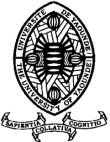Determinants of the Non-Use of Insecticide-Treated Mosquito Nets in Benin
Déterminants de la Non-Utilisation des Moustiquaires Imprégnées d'Insecticide au Bénin
DOI:
https://doi.org/10.5281/hra.v2i5.5571Keywords:
paludisme, moustiquaires, imprégnées, insecticides, nonutilisation déterminants, BeninAbstract
ABSTRACT
Introduction. The use of insecticide-treated mosquito nets (ITNs) is a key intervention in malaria control efforts. However, non-utilization of ITNs continues to be a challenge in many endemic regions, including Benin. The aim of our study was to determine the factors associated with the non-use of ITNs in Benin in 2022. Methodology. This study utilized secondary data from the malaria indicators survey conducted in Benin in 2022. A total of 9,184 households and 44,669 individuals were included in the analysis. The dependent variable was the non-use of ITNs, while independent variables included age, residential area, etc…. Descriptive statistics and binary logistic regression were used for data analysis. Results. A total of 9184 households were included in the study. The median age of household members was 17 years. The age group of 30-64 years was the most represented with a sex ratio of 1, 06. Household heads were predominantly of Fon ethnicity in 33% of cases, had a primary educational level in 22.7% of cases, and belonged to the middle socioeconomic status quintile in 20.8% of cases. The prevalence of non-use ITNs was 39.4%. Men slept under ITNs less than women (p < 2.2 × 10−16). Individuals with a primary education had a 16% lower risk of not using ITNs (aOR = 0.86; 95% CI = [0.79-0.87]) compared to those with no education. This risk was 49% lower when the household head had a secondary school (aOR = 0.51; 95% CI = [0.45-0.55]) or university education (aOR = 0. 51; 95% CI = [0.45-0.57]). Conclusion. Understanding and addressing the multifaceted determinants of ITN non-use are essential for improving malaria control strategies and reducing the disease burden in endemic regions like Benin.
RÉSUMÉ
Introduction. L'utilisation de moustiquaires imprégnées d'insecticide (MIIs) est une intervention clé dans les efforts de lutte contre le paludisme. Cependant, la non-utilisation des MIIs continue d'être un défi dans de nombreuses régions endémiques, dont le Bénin. L'objectif de notre étude était de déterminer les facteurs associés à la non-utilisation des MIIs au Bénin en 2022. Méthodologie. Cette étude a utilisé des données secondaires de l'enquête sur les indicateurs du paludisme menée au Bénin en 2022. Un total de 9 184 ménages et 44 669 sujets ont été inclus dans l'analyse. La variable dépendante était la non-utilisation des MIIs, tandis que les variables indépendantes incluaient l'âge, la zone de résidence, etc.... Des statistiques descriptives et une régression logistique binaire ont été utilisées pour l'analyse des données. Résultats. Un total de 9184 ménages ont été inclus dans l'étude. L'âge médian des membres du ménage était de 17 ans. Le groupe d'âge de 30 à 64 ans était le plus représenté avec un ratio hommes/femmes de 1,06. Les chefs de ménage étaient majoritairement d'ethnie Fon dans 33% des cas, avaient un niveau d'éducation primaire dans 22,7% des cas, et appartenaient au quintile de statut socio-économique moyen dans 20,8% des cas. La prévalence de la non-utilisation des MIIs était de 39,4%. Les hommes dormaient sous des MIIs moins que les femmes (p < 2,2 x 10−16). Les individus ayant un niveau d'éducation primaire avaient un risque de non-utilisation des MIIs 16% inférieur (aOR = 0,86 ; IC 95% = [0,79-0,87]) par rapport à ceux sans éducation. Ce risque était de 49% inférieur lorsque le chef de ménage avait un niveau d'éducation secondaire (aOR = 0,51 ; IC 95% = [0,45-0,55]) ou universitaire (aOR = 0,51 ; IC 95% = [0,45-0,57]). Conclusion. Comprendre et aborder les déterminants multifacettes de la non-utilisation des MIIs sont essentiels pour améliorer les stratégies de lutte contre le paludisme et réduire le fardeau de la maladie dans les régions endémiques comme le Bénin.
References
World Health Organization. World malaria report 2020: 20 years of global progress and challenges. World Health Organization; 2020.
Tapera O. Determinants of long-lasting insecticidal net ownership and utilization in malaria transmission regions: evidence from Zimbabwe Demographic and Health Surveys. Malaria J 2019; 18:278. https://doi.org/10.1186/s12936-019-2912-x.
World Health Organization. A framework for malaria elimination. Geneva: World Health Organization; 2017.
Nounouce NP, Zakariaou N, Patrick FPE, Marie-José E, Yollande TM, Guilaine DYC, et al. Déterminants sociodémographiques de l’utilisation de la moustiquaire imprégnée d’insecticide chez les enfants de moins de 05 ans au Cameroun. Health Sci Dis 2022;23.
Philippe CM, Odile NN, Numbi OL. Problématique de l’utilisation des Moustiquaires Imprégnées d’insecticide à Longue Durée (MILD) chez les enfants de moins de 5 ans en République Démocratique du Congo. Pan Afr Med J 2016;23:101. https://doi.org/10.11604/pamj.2016.23.101.7050.
World Health Organization. World malaria report 2022. Geneva: World Health Organization; 2022.
Institut National de la Statistique et de l’Analyse Économique. Cinquième Enquête Démographique et de Santé au Bénin (EDSB-V) 2017-2018. Bénin: INSAE; 2019.
Diallo OO, Ozodiegwu ID, Camara A, Galatas B, Gerardin J. Factors associated with the ownership and use of insecticide-treated nets in Guinea: an analysis of the 2018 Demographic and Health Survey. Malaria J 2023;22:29. https://doi.org/10.1186/s12936-023-04463-z.
Djènontin A, Moiroux N, Bouraïma A, Zogo B, Sidick I, Corbel V, et al. Field efficacy of a new deltamethrin long lasting insecticidal net (LifeNet©) against wild pyrethroid-resistant Anopheles gambiae in Benin. BMC Public Health 2018;18:947. https://doi.org/10.1186/s12889-018-5876-9.
Adageba SK, Kanmiki EW, Asoala V, Oduro AR, Baidoo PK. Bio-efficacy, physical integrity, use and attrition of long-lasting insecticidal nets under operational conditions for malaria prevention in Ghana. PloS One 2022;17:e0275825. https://doi.org/10.1371/journal.pone.0275825.
Ilombe G, Mpiempie T, Mesia G, Matangila JR, Lulebo AM, Maketa V, et al. Prevalence and predictors of adverse events following exposure to long-lasting insecticidal nets used for malaria prevention: a community based cross-sectional study in the Democratic Republic of the Congo. Malaria J 2023;22:35. https://doi.org/10.1186/s12936-023-04458-w.
Madiba S, Chelule PK, Mokgatle MM. Attending Informal Preschools and Daycare Centers Is a Risk Factor for Underweight, Stunting and Wasting in Children under the Age of Five Years in Underprivileged Communities in South Africa. Int J Environ Res Public Health 2019;16:2589. https://doi.org/10.3390/ijerph16142589.
Olney DK, Kariger PK, Stoltzfus RJ, Khalfan SS, Ali NS, Tielsch JM, et al. Development of nutritionally at-risk young children is predicted by malaria, anemia, and stunting in Pemba, Zanzibar. J Nutr 2009;139:763–72. https://doi.org/10.3945/jn.107.086231.
Kuetche MTC, Tabue RN, Fokoua-Maxime CD, Evouna AM, Billong S, Kakesa O. Prevalence and risk factors determinants of the non-use of insecticide-treated nets in an endemic area for malaria: analysis of data from Cameroon. Malaria J 2023;22:205. https://doi.org/10.1186/s12936-023-04510-9.
Fokam EB, Kindzeka GF, Ngimuh L, Dzi KTJ, Wanji S. Determination of the predictive factors of long-lasting insecticide-treated net ownership and utilisation in the Bamenda Health District of Cameroon. BMC Public Health 2017;17:263. https://doi.org/10.1186/s12889-017-4155-5.
Tchinda VHM, Socpa A, Keundo AA, Zeukeng F, Seumen CT, Leke RGF, et al. Factors associated to bed net use in Cameroon: a retrospective study in Mfou health district in the Centre Region. Pan Afr Med J 2012;12:112.
Eteng M, Mitchell S, Garba L, Ana O, Liman M, Cockcroft A, et al. Socio-economic determinants of ownership and use of treated bed nets in Nigeria: results from a cross-sectional study in Cross River and Bauchi States in 2011. Malar J 2014;13:316. https://doi.org/10.1186/1475-2875-13-316.
Pooseesod K, Parker DM, Meemon N, Lawpoolsri S, Singhasivanon P, Sattabongkot J, et al. Ownership and utilization of bed nets and reasons for use or non-use of bed nets among community members at risk of malaria along the Thai-Myanmar border. Malaria J 2021;20:305. https://doi.org/10.1186/s12936-021-03837-5.
Russell CL, Sallau A, Emukah E, Graves PM, Noland GS, Ngondi JM, et al. Determinants of Bed Net Use in Southeast Nigeria following Mass Distribution of LLINs: Implications for Social Behavior Change Interventions. PLOS ONE 2015;10:e0139447. https://doi.org/10.1371/journal.pone.0139447.
Ankomah A, Adebayo SB, Arogundade ED, Anyanti J, Nwokolo E, Ladipo O, et al. Determinants of insecticide-treated net ownership and utilization among pregnant women in Nigeria. BMC Public Health 2012;12:105. https://doi.org/10.1186/1471-2458-12-105.
Downloads
Published
How to Cite
Issue
Section
License
Authors who publish with this journal agree to the following terms:
- Authors retain copyright and grant the journal right of first publication with the work simultaneously licensed under a Creative Commons Attribution License CC BY-NC-ND 4.0 that allows others to share the work with an acknowledgement of the work's authorship and initial publication in this journal.
- Authors are able to enter into separate, additional contractual arrangements for the non-exclusive distribution of the journal's published version of the work (e.g., post it to an institutional repository or publish it in a book), with an acknowledgement of its initial publication in this journal.
- Authors are permitted and encouraged to post their work online (e.g., in institutional repositories or on their website) prior to and during the submission process, as it can lead to productive exchanges, as well as earlier and greater citation of published work










